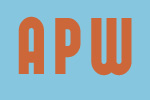Poetry and Dance
Instructions
Psychologist Howard Gardner's idea of multiple intelligences describes different types of "intelligences" in human beings. His categories are: linguistic, logic-mathematical, musical, spatial, bodily kinesthetic, naturalist, interpersonal and intrapersonal. These multiple intelligences affect our performance as learners.
In a classroom setting, teachers often employ differentiated learning and universal design learning strategies, by which they combine a variety of learning modalities: visual, verbal, aural, logical, and kinesthetic. Some learners retain information best when it is presented visually, others orally, and some learners learn best kinesthetically: they learn by doing.
The proverb: "I hear and I forget; I see and I remember; I do and I understand" reflects this.
In artistic expression, artists work in a variety of mediums: some of us are painters, others are musicians, dancers, poets, and so on. Mixed-media artists articulate their visions by combining media as a means for expression.
With this exercise you combine body kinesthetics and music with language to write your Dance Poem.

To get started, write a single word on eleven 3 x 5 cards from the
following categories:
1) an animal
2) a bird
3) a place you have visited
4) a proper noun
5) an action verb
6) a color
7) the name of a musical instrument
8) a food
9) a word for an emotion
10) the name of a tool an artist uses
11) a word of time (morning, evening).
It is better if you ask a friend to write these words for you, as when you encounter them in this exercise, the words will be more surprising, but writing them yourself will work.
Next, pick out a favorite musical selection -- Beethoven or Justin Bieber -- something you really like.
To set up: place your word cards throughout the room, face down, take out your notepad and pen (works better without a computer), and put on the music.
Let's Dance! Show us your moves!
Begin to move around the room in time to the music -- dance.
Forget you're writing a poem for a moment, and let your mind escape into the sound of the music and feel your body react to the rhythms.
Listen to the music for a few minutes, and when your thoughts have cleared, circulate around the room to one of your note cards at random.
Pick up the card, turn it over and read it, and then keep dancing.
While you are moving, allow the action of your body and the sound of the music to lead you to compose a sentence, in your head, that uses the word from the word card.
When you think of a complete sentence, go over to your notebook and write it down.
Put your pen down, and continue dancing.
In another few minutes, after your thoughts have cleared again, go over to the second card, pick it up, read it, and keep dancing until you think of a sentence using that word. Think of a random sentence, not necessarily related to the first. The sentences could be related, but they don't necessarily have to be.
Write your second sentence in the notebook below the first sentence.
Continue to circle the room, dancing, and picking up the note cards at random, until you have created eleven sentences.
Once you have "danced" all the words into sentences, you are ready to begin the poem.
Review the eleven random sentences you have written.
Reflect on them for a moment. Do they connect in some way? How? Are there any possibilities for metaphor? Does some emotion or emotional center seem to emerge? What do the sentences suggest? Is there some rhythmical pattern to the words?
You may continue to listen to the music while you write, or you may wish to sit down as you begin to compose -- though Hemingway's work habit, from the beginning, was to stand when he wrote, in a pair of oversized loafers, his typewriter and the reading board chest-high before him.
Use these eleven sentences as the starting point for your poem.
Having gotten out of your seat and moved around the room, you've employed different modalities for writing than your familiar methods.
Should two or more of the sentences suggest a strong direction for the poem, follow them, discard the rest, and allow your intuition to take over. You don't need to use each sentence in the poem, and you may add others as the composition process evolves.
Break a leg!
Please write a poem using music and body kinesthesiology in 30 lines or fewer, and submit it for consideration on the APW Forum/Guests' Pages. Email subject line: Dance Poem.
Enjoy!
